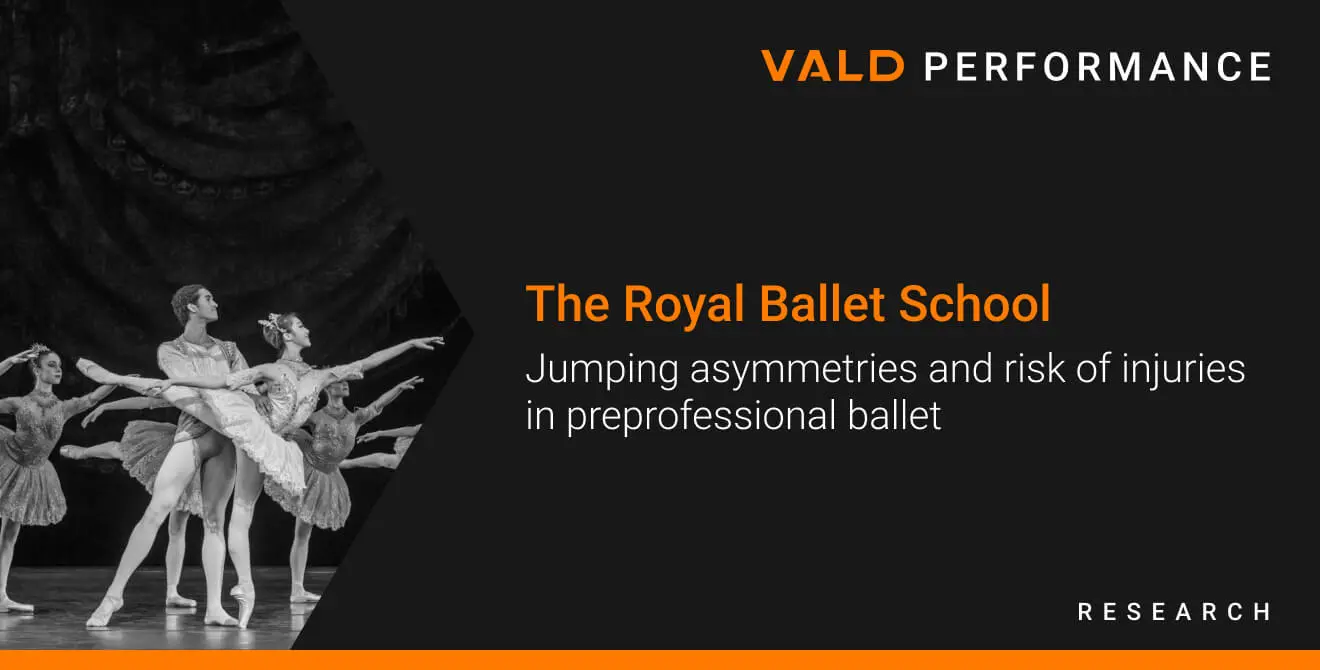Jumping Asymmetries and Risk of Injuries in Preprofessional Ballet
Available in:
EN
Study Information
MacSweeney, N. D., Shaw, J. W., Simkin, G. P., Pedlar, C. R., Price, P. D., Mahaffey, R., & Cohen, D. D. (2024). Jumping Asymmetries and Risk of Injuries in Preprofessional Ballet. The American Journal of Sports Medicine, 03635465231218258. https://journals.sagepub.com/doi/full/10.1177/03635465231218258
Purpose
The purpose of this prospective study was to investigate the associations between interlimb asymmetry during a double-leg countermovement jump (DL-CMJ) and single-leg jump (SLJ) and injury risk in adolescent preprofessional ballet dancers. This research aimed to determine whether the differences in kinetic variables during these jumps and the resulting asymmetries in limb movement could be linked to a higher risk of injuries in these dancers.
Methods and Key Findings
Participants included 114 male and 128 female adolescent (age range 11-19) preprofessional ballet dancers from The Royal Ballet School in London. As part of their annual screening, each participant performed three double-leg countermovement jumps (DL-CMJs) and three single-leg jumps (SLJs) on ForceDecks (FD4000) and analyzed using ForceDecks software. The study focused on evaluating absolute and directional (left and right limb dominance) asymmetries in a set of kinetic variables during the DL-CMJ and jump height during the SLJ. The asymmetry was characterized as either “high” or “normal” based on the percentage of asymmetry relative to the sample mean and standard deviation. The study then calculated risk ratios (RRs) and confidence intervals (CIs) based on the incidence of injuries in the following academic year.
Of the 242 dancers, 128 were injured in the following year. The study revealed high asymmetry in left limb–dominant kinetic variables during the DL-CMJ, such as eccentric peak force, eccentric rate of force development (RFD) and various phases of concentric impulse, were linked to a higher risk of injuries.
Additionally, left limb–dominant jump height asymmetry in the SLJ was also associated with increased injury risk. The study found that 3 absolute, 7 left limb–dominant, and 1 right limb–dominant asymmetries in the DL-CMJ, as well as left limb–dominant jump height asymmetry in the SLJ, significantly elevated injury risk.
Interestingly, when the data were separated by sex, the study observed differences in the variables that showed significant relationships with injury risk. In boys, certain asymmetries in the DL-CMJ and SLJ jump height were significantly associated with injury risk, whereas in girls, different variables, particularly related to the eccentric phase of the DL-CMJ, were more strongly linked to injuries.
VALD’s Solution
This research provides crucial insights into the biomechanical factors contributing to injury risks in young ballet dancers and underscores the importance of considering limb dominance and asymmetry in developing injury prevention strategies. ForceDecks allows users to assess and monitor limb asymmetries, empowering coaches, therapists and trainers to identify potential injury risks before they escalate. This is particularly crucial in disciplines like ballet, where physical demand can easily lead to injuries, often stemming from unnoticed imbalances and asymmetries.
